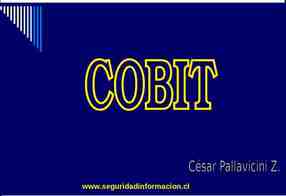Network Security Protocols: A Tutorial Radia Perlman March 2004
73 Slides170.50 KB
Network Security Protocols: A Tutorial Radia Perlman March 2004 ([email protected]) 1
Purpose of this tutorial A quick intro into a somewhat scary field A description of what you need to know vs what you can trust others to do To make the field non-intimidating But a word from Russ Housley: Don’t try this at home . 1
The Problem Internet evolved in a world w/out predators. DOS was viewed as illogical and undamaging. The world today is hostile. Only takes a tiny percentage to do a lot of damage. Must connect mutually distrustful organizations and people with no central management. And society is getting to depend on it for reliability, not just “traditional” security concerns. 1
Security means different things to different people Limit data disclosure to intended set Monitor communications to catch terrorists Keep data from being corrupted Destroy computers with pirated content Track down bad guys Communicate anonymously 1
Insecurity The Internet isn’t insecure. It may be unsecure. Insecurity is mental state. The users of the Internet may be insecure, and perhaps rightfully so Simson Garfinkel 1
Intruders: What Can They Do? Eavesdrop--(compromise routers, links, routing algorithms, or DNS) Send arbitrary messages (including IP hdr) Replay recorded messages Modify messages in transit Write malicious code and trick people into running it 1
Some basic terms Authentication: “Who are you?” Authorization: “Should you be doing that?” DOS: denial of service Integrity protection: a checksum on the data that requires knowledge of a secret to generate (and maybe to verify) 1
Some Examples to Motivate the Problems Sharing files between users – File store must authenticate users – File store must know who is authorized to read and/or update the files – Information must be protected from disclosure and modification on the wire – Users must know it’s the genuine file store (so as not to give away secrets or read bad data) 1
Examples cont’d Electronic Mail – Send private messages – Know who sent a message (and that it hasn’t been modified) – Non-repudiation - ability to forward in a way that the new recipient can know the original sender – Anonymity 1
Examples cont’d Electronic Commerce – Pay for things without giving away my credit card number to an eavesdropper or phony merchant – Buy anonymously – Merchant wants to be able to prove I placed the order 1
Sometimes goals conflict privacy vs company (or govt) wants to be able to see what you’re doing losing data vs disclosure (copies of keys) denial of service vs preventing intrusion 1
Cryptography Crypto – secret key – public key – cryptographic hashes Used for – authentication, integrity protection, encryption 1
Secret Key Crypto Two operations (“encrypt”, “decrypt”) which are inverses of each other. Like multiplication/division One parameter (“the key”) Even the person who designed the algorithm can’t break it without the key (unless they diabolically designed it with a trap door) Ideally, a different key for each pair of users 1
Secret key crypto, Alice and Bob share secret S encrypt f(S, plaintext) ciphertext decrypt f(S, ciphertext) plaintext authentication: send f(S, challenge) integrity check: f(S, msg) X verify integrity check: f(S, X, msg) 1
A Cute Observation Security depends on limited computation resources of the bad guys (Can brute-force search the keys) – assuming the computer can recognize plausible plaintext A good crypto algo is linear for “good guys” and exponential for “bad guys” Even 64 bits is daunting to search through Faster computers work to the benefit of the good guys! 1
Public Key Crypto Two keys per user, keys are inverses of each other (as if nobody ever invented division) – public key “e” you tell to the world – private key “d” you keep private Yes it’s magic. Why can’t you derive “d” from “e”? and if it’s hard, where did (e,d) come from? 1
Digital Signatures One of the best features of public key An integrity check – calculated as f(priv key, data) – verified as f(public key, data, signature) Verifiers don’t need to know secret vs. secret key, where integrity check is generated and verified with same key, so verifiers can forge data 1
Cryptographic Hashes Invented because public key is slow Slow to sign a huge msg using a private key Cryptographic hash – fixed size (e.g., 160 bits) – But no collisions! (at least we’ll never find one) So sign the hash, not the actual msg If you sign a msg, you’re signing all msgs with that hash! 1
Popular Secret Key Algorithms DES (old standard, 56-bit key, slow) 3DES: fix key size but 3 times as slow RC4: variable length key, “stream cipher” (generate stream from key, XOR with data) AES: replacement for DES, will probably take over 1
Popular Public Key Algorithms RSA: nice feature: public key operations can be made very fast, but private key operations will be slow. Patent expired. ECC (elliptic curve crypto): smaller keys, so faster than RSA (but not for public key ops). Some worried about patents 1
Hash stuff Most popular hash today SHA-1 (secure hash algorithm) Older ones (MD2, MD4, MD5) still around Popular secret-key integrity check: hash together key and data One popular standard for that within IETF: HMAC 1
Hybrid Encryption Instead of: Message Encrypted with Alice’s Public Key Use: Randomly Chosen K Encrypted with Alice’s Public Key Message Encrypted with Secret Key K 1
Hybrid Signatures Instead of: Message Signed with Bob’s Private Key Use: Message Message Digest (Message) Signed with Bob’s Private Key 1
Signed and Encrypted Message Randomly Chosen K Encrypted with Alice’s Public Key Message Digest (Message) Signed with Bob’s Private Key Encrypted with Secret Key K 1
Don’t try this at home No reason (except for the Cryptography Guild) to invent new cryptographic algorithms Even if you could invent a better (faster, more secure) one, nobody would believe it Use a well-known, well-reviewed standard 1
Challenge / Response Authentication Bob (knows K) Alice (knows K) I’m Alice Pick Random R Encrypt R using K (getting C) If you’re Alice, decrypt C R 1
Non-Cryptographic Network Authentication (olden times) Password based – Transmit a shared secret to prove you know it Address based – If your address on a network is fixed and the network makes address impersonation difficult, recipient can authenticate you based on source address – UNIX .rhosts and /etc/hosts.equiv files 1
People “Humans are incapable of securely storing high-quality cryptographic keys, and they have unacceptable speed and accuracy when performing cryptographic operations. They are also large, expensive to maintain, difficult to manage, and they pollute the environment. It is astonishing that these devices continue to be manufactured and deployed, but they are sufficiently pervasive that we must design our protocols around their limitations.” – Network Security: Private Communication in a Public World 1
Authenticating people What you know What you have What you are 1
What You Know. Mostly this means passwords – Subject to eavesdropping – Subject to on-line guessing – Subject to off-line guessing 1
On-Line Password Guessing If guessing must be on-line, password need only be mildly unguessable Can audit attempts and take countermeasures – ATM: eat your card – military: shoot you – networking: lock account (subject to DOS) or be slow per attempt 1
Off-Line Password Guessing If a guess can be verified with a local calculation, passwords must survive a very large number of (unauditable) guesses 1
Passwords as Secret Keys A password can be converted to a secret key and used in a cryptographic exchange An eavesdropper can often learn sufficient information to do an off-line attack Most people will not pick passwords good enough to withstand such an attack 1
Off-line attack possible Alice (knows pwd) Workstation Server (knows h(pwd)) “Alice”, pwd Compute h(pwd) I’m Alice R (a challenge) {R}h(pwd) 1
Key Distribution - Secret Keys Could configure n2 keys Instead use Key Distribution Center (KDC) – Everyone has one key – The KDC knows them all – The KDC assigns a key to any pair who need to talk This is basically Kerberos 1
KDC Alice/Ka Alice/Ka Bob/Kb Carol/Kc Ted/Kt Fred/Kf Ted/Kt Bob/Kb Fred/Kf Carol/Kc 1
Key Distribution - Secret Keys KDC Alice A wants to talk to B Bob Randomly choose Kab {“B”, Kab}Ka {“A”, Kab}Kb {Message}Kab 1
KDC Realms KDCs scale up to hundreds of clients, but not millions There’s no one who everyone in the world is willing to trust with their secrets KDCs can be arranged in a hierarchy so that trust is more local 1
KDC Realms Interorganizational KDC Lotus KDC A B SUN KDC C D E MIT KDC F G 1
Key Distribution - Public Keys Certification Authority (CA) signs “Certificates” Certificate a signed message saying “I, the CA, vouch that 489024729 is Radia’s public key” If everyone has a certificate, a private key, and the CA’s public key, they can authenticate 1
Key Distribution - Public Keys Bob Alice [“Alice”, key 342872]CA [“Bob”, key 8294781]CA Auth, encryption, etc. 1
KDC vs CA Tradeoffs KDC solution less secure – Highly sensitive database (all user secrets) – Must be on-line and accessible via the net complex system, probably exploitable bugs, attractive target – Must be replicated for performance, availability each replica must be physically secured 1
KDC vs CA KDC more expensive – big, complex, performance-sensitive, replicated – CA glorified calculator can be off-line (easy to physically secure) OK if down for a few hours not performance-sensitive Performance – public key slower, but avoid talking to 3rd party during connection setup 1
KDC vs CA Tradeoffs CA’s work better interrealm, because you don’t need connectivity to remote CA’s Revocation levels the playing field somewhat 1
Revocation What if someone steals your credit card? – depend on expiration date? – publish book of bad credit cards (like CRL mechanism cert revocation list) – have on-line trusted server (like OCSP online certificate status protocol) 1
Strategies for Hierarchies Monopoly Oligarchy Anarchy Bottom-up 1
Monopoly Choose one universally trusted organization Embed their public key in everything Give them universal monopoly to issue certificates Make everyone get certificates from them Simple to understand and implement 1
What’s wrong with this model? Monopoly pricing Getting certificate from remote organization will be insecure or expensive (or both) That key can never be changed Security of the world depends on honesty and competence of that one organization, forever 1
Oligarchy of CAs Come configured with 80 or so trusted CA public keys (in form of “self-signed” certificates!) Usually, can add or delete from that set Eliminates monopoly pricing 1
What’s wrong with oligarchy? Less secure! – security depends on ALL configured keys – naïve users can be tricked into using platform with bogus keys, or adding bogus ones (easier to do this than install malicious software) – impractical for anyone to check trust anchors Although not monopoly, still favor certain organizations. Why should these be trusted? 1
Anarchy Anyone signs certificate for anyone else Like configured delegated, but user consciously configures starting keys Problems – won’t scale (too many certs, computationally too difficult to find path) – no practical way to tell if path should be trusted – too much work and too many decisions for user 1
Important idea CA trust shouldn’t be binary: “is this CA trusted?” Instead, a CA should only be trusted for certain certificates Name-based seems to make sense (and I haven’t seen anything else that does) 1
Top Down with Name-based policies Assumes hierarchical names Each CA only trusted for the part of the namespace rooted at its name Easy to find appropriate chain This is a sensible policy that users don’t have to think about But: Still monopoly at top, since everyone needs to be configured with that key 1
Bottom-Up Model Each arc in name tree has parent certificate (up) and child certificate (down) Name space has CA for each node Cross Links to connect Intranets, or to increase security Start with your public key, navigate up, cross, and down 1
Intranet abc.com nj.abc.com [email protected] [email protected] ma.abc.com [email protected] 1
Extranets: Crosslinks abc.com xyz.com 1
Extranets: Adding Roots root abc.com xyz.com 1
Advantages of Bottom-Up For intranet, no need for outside organization Security within your organization is controlled by your organization No single compromised key requires massive reconfiguration Easy configuration: public key you start with is your own 1
What layer? Layer 2 – protects link hop-by-hop – IP headers can be hidden from eavesdropper (protects against “traffic analysis”) Layer 3/4 (more on next slide) – protects end-to-end real-time conversation Upper layer (e.g., PGP, S/MIME) – protects msgs. Store/forward, not real-time 1
“Key Exchange” Mutual authentication/session key creation (create “security association”) Good to cryptographically protect entire session (not just initial authentication) Good to have new key for each session Examples – SSL/TLS or Secure Shell (“layer 4”) – IPsec (“layer 3”) 1
Layer 3 vs layer 4 Layer 3 idea: don’t change applications or API to applications, just OS layer 4 idea: don’t change OS, only change application. They run on top of layer 4 (TCP/UDP) 1
ESP Encapsulating Security Payload IP Header Next Header ‘50’ (ESP) ESP Header Encrypted Payload Encrypted Padding Pad Len NXT MIC TCP 6 UDP 17 ESP 50 IP 4 Session ID Sequence # Over ESP Header, Encrypted Payload/Pad/Padlen/NXT 1
Layer 3 vs layer 4 layer 3 technically superior – Rogue packet problem TCP doesn’t participate in crypto, so attacker can inject bogus packet, no way for TCP to recover – easier to do outboard hardware processing (since each packet independently encrypted) layer 4 easier to deploy And unless API changes, layer 3 can’t pass up authenticated identity 1
What’s going on in IETF Security Area Kerberos PKIX (certificate format) (see next slide) S/MIME, PGP IPsec, SSL/TLS, Secure Shell SASL (syntax for negotiating auth protocol) DNSSEC (public keys, signed data in DNS) sacred (downloading credentials) 1
PKIX Based on X.509 (!) Two issues: – ASN.1 encoding: big footprint for code, certs bigger – names not what Internet applications use! So ignore name, or DNS name in alternate name, or CN DNS name, or DC 1
PKI, cont’d PKIX is used (more or less successfully) in SSL/TLS, IPsec, and S/MIME Names problematic no matter what – What if there are several John Smith’s at the organization? – Just an example of the deeper issues beyond crypto, provably secure handshakes, etc. 1
But every protocol needs a “security considerations section” What do you have to think about? Not enough to say “just use IPsec” Sometimes (as with VRRP) protecting one protocol in a vacuum is wasted effort – putting expensive locks on one window, while the front door is wide open We don’t need to protect a protocol. We need to protect the user 1
Examples Putting integrity checks on routing msgs – Defends against outsiders injecting routing msgs. That’s good, but – Doesn’t prevent outsiders from answering ARPs, or corrupting DNS info – Doesn’t protect against “Byzantine failures” (where a trusted thing goes bad) 1
Examples SNMP Should be straightforward end-to-end security But it has to work when the network is flaky – DNS not available – LDAP database for retrieving certificates might be down, as might revocation infrastructure 1
Examples Non-crypto things – Use up resources DHCP, could request all possible addresses Use all bandwidth on a link – Active Content Too many examples of hidden places for active content! Encryption does not imply integrity! 1
Things to put into security considerations section What security issues it does solve What security issues it does not solve Implementation or deployment issues that might impact security 1
An example of (what I think is) a good security considerations section Kerberos Network Auth Service i-d Some excerpts – solves authentication – does not address authorization or DOS or PFS – requires on-line database of keys, so NAS must be physically secured – subject to dictionary attack (pick good pwds) – requires reasonably synchronized clocks – tickets might contain private information – NAS must remember used authenticators to avoid replay 1
Conclusions Until a few years ago, you could connect to the Internet and be in contact with hundreds of millions of other nodes, without giving even a thought to security. The Internet in the ’90’s was like sex in the ’60’s. It was great while it lasted, but it was inherently unhealthy and was destined to end badly. I’m just really glad I didn’t miss out again this time. —Charlie Kaufman 1














































































